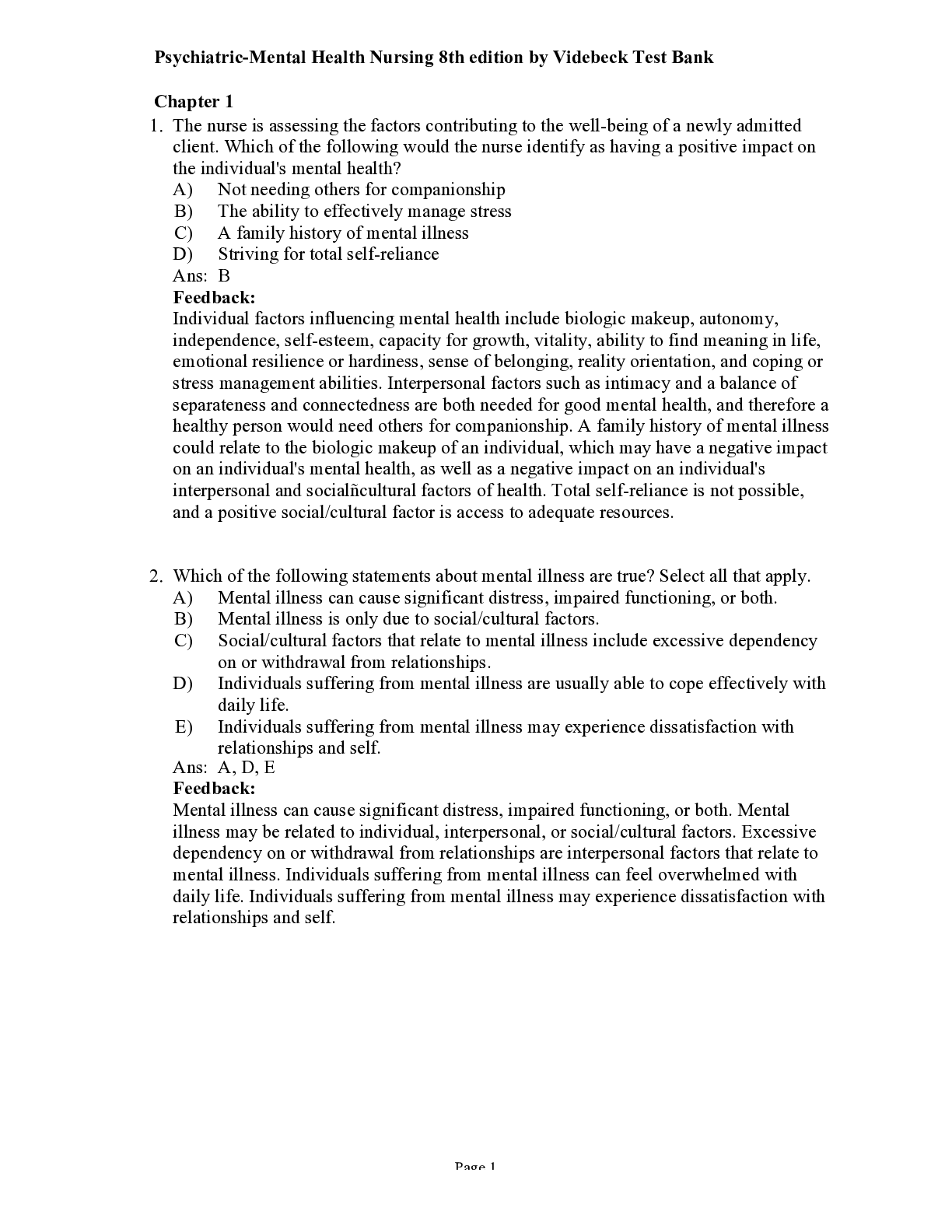Psychiatric-Mental Health Nursing 8th edition by Videbeck Test Bank
Course
Project Management
Subject
Chemistry
Category
Questions and Answers
Pages
334
Uploaded By
ATIPROS
Preview 5 out of 334 Pages


Download all 334 pages for $ 15.00
Reviews (0)
$15.00
